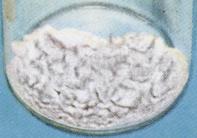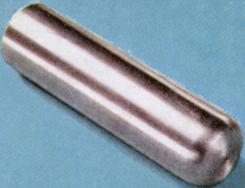 Astronomy View all facts Glossary Help
Astronomy View all facts Glossary Help Astronomy View all facts Glossary Help Astronomy View all facts Glossary Help |
| physical object > natural object > collection of particles > phase of matter > solid > metal > actinide |
| actinide comparison table | ||||||||||||||||||||||||||||||||||||||||||||||||||||
| Subject | has number of proton | has atomic number | has occurrence | has linear expansion coefficient | has daily dietary intake | has heat of sublimation | has world production | has longest lived isotope | has crystal type | has heat of vaporization | has molar volume | has electron configuration | has ocean residence time | has symbol | has density | has term symbol | has thermal conductivity | has atomic emission line | has mass absorption coefficient | has boiling point | has discovery location | has abundance | reacts with | has registry number | has decay product | has level in human | has pronunciation | has ocean oxidation state | has specimen | has discoverer | has atomic radii | has ionic radii | has biological role | has chief source | has name origin | is a kind of | has melting point | has number of isotope | has relative atomic mass | has hazard | has ocean concentration | has image | has heat capacity | has isotope mass range | has electronegativity | has space group | has definition | has discovery date | has heat of fusion | has desintegration energy | has mass of element in person | has crystal cell dimension |
|---|---|---|---|---|---|---|---|---|---|---|---|---|---|---|---|---|---|---|---|---|---|---|---|---|---|---|---|---|---|---|---|---|---|---|---|---|---|---|---|---|---|---|---|---|---|---|---|---|---|---|---|---|
| actinium | 89 | 89 | 14.9 K-1 | nil | 51.9 ± 0.5 kJ mol-1 | probably less than a gram | actinium 227 | f.c.c. | 418 kJ mol-1 | 22.6 cm3 | [Rn]6d17s2 in ground state | Ac | 10060 kg m-3 for solid at 293 K | 2D3/2 in ground state | 12 W m-1 K-1 at 300 K | 591.085 nm for Ac II | cm2 g-1 for MoKα X-ray diffraction | 3470 ± 300 K | Paris, France | nil in seawater | water to release hydrogen gas | 7440-34-8 for Chemical Abstracts System database | the products produced immediately after decay | nil | ak-tin-iuhm | not commerecially available | Andre Debierne | 188 pm | 118 pm for Ac3+ | none | uranium ore contain 0.2 p.p.m. | aktinos from Greek word for 'ray' | radioactive element | 1320 ± 50 K | 26 | 227.0728 for 227Ac in units of 12C = 12.000 | never encountered normally, dangerous because it is a powerful source of α-radiation, element found only inside nuclear facilities or research laboratories |  | 20.84 J K-1 mol-1 for gas at constant pressure 0.1 MPa at 298.15 K | 209 to 232 | 1.1 Pauling | Fm3m | soft, silvery-white, radioactive metal which glows in the dark | 1899 | 14.2 kJ mol-1 | the total energy produced when the particle decays | nil for a 70 kg average person | a = 531.1 pm | ||||
| protactinium | 89 to 103 | ocean | unknown | V | unclassified oceanic element | unknown |  | |||||||||||||||||||||||||||||||||||||||||||||
| thorium | 89 to 103 | ocean | 50 years | IV | scavenged oceanic element | decreasing with depth |  | |||||||||||||||||||||||||||||||||||||||||||||
| transuranium element | greater than 92 | synthetic element | A synthetic element with atomic number greater than 92 (uranium) | |||||||||||||||||||||||||||||||||||||||||||||||||
| uranium | 89 to 103 | ocean | 300000 years | VI | accumulating oceanic element | depth indenpendent |  |
 Next inner transition metal: rare Earth Up: inner transition metal, metal
Next inner transition metal: rare Earth Up: inner transition metal, metal